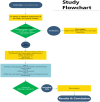Assessing physical literacy and establishing normative reference curves for 8-12-year-old children from South Punjab, Pakistan: The PAK-IPPL cross-sectional study
- PMID: 39932941
- PMCID: PMC11813120
- DOI: 10.1371/journal.pone.0312916
Assessing physical literacy and establishing normative reference curves for 8-12-year-old children from South Punjab, Pakistan: The PAK-IPPL cross-sectional study
Abstract
Background: Physical literacy (PL) encompasses an individual's motivation, confidence, physical competence, and knowledge, all of which foster lifelong engagement in physical activities. In developing countries like Pakistan, there is a pressing need to assess PL status using culturally valid tools. This study aims to evaluate PL among children aged 8-12 in South Punjab, Pakistan while developing normative reference curves and exploring factors influencing PL.
Methods: A cross-sectional study was conducted with 1,360 students (mean age = 10.00, SD = 1.41 years) from 85 schools, using a culturally adapted and validated version of the CAPL-2 tool. The CAPL-2 scoring system was validated to align with the population and cultural context. Statistical analyses, including t-tests, Chi-squared tests, Pearson's correlation, multivariate logistic regression, and Classification and regression tree methods, were performed to identify factors associated with PL classifications, with significance set at p < 0.05. The Generalized Additive Models for Location, Scale, and Shape were used to create age- and sex-specific PL normative reference curves.
Result: The study revealed significant influences of gender, socioeconomic status (SES), and locality on PL. Boys consistently scored higher in PL across all domains compared to girls, with significant differences (p < 0.001) in all but the knowledge and understanding domain (p = 0.160). Boys' PL scores were 6% higher overall, with a 7% and 5% advantage in the daily behavior and physical competence domains, respectively. Children from low SES and rural settings exhibited significantly higher PL scores than their middle/high SES and urban counterparts (p < 0.001). Walking to school was positively correlated with higher PL scores, while children traveling by car had the lowest scores (p < 0.001). Anthropometric differences between genders were noted, further emphasizing the disparities in physical competence. Most participants (71.6%) fell into the "Beginning" or "Progressing" PL categories, with females predominantly in these lower stages.
Conclusion: This study reveals that gender, SES, and locality significantly impact PL among children in South Punjab, Pakistan. Boys, lower SES groups, and rural children showed higher PL scores, with everyday activities like walking to school positively contributing to PL development. These findings emphasize the need for targeted, demographically sensitive interventions to enhance PL in the region.
Copyright: © 2025 Hadier et al. This is an open access article distributed under the terms of the Creative Commons Attribution License, which permits unrestricted use, distribution, and reproduction in any medium, provided the original author and source are credited.
Conflict of interest statement
The authors have declared that no competing interests exist.
Figures










References
-
- Organization, W.H. WHO guidelines on physical activity and sedentary behaviour. 2020 [cited Access 2020; https://www.who.int/publications/i/item/9789240015128. - PubMed
-
- Ding D., Varela A.R., Bauman A.E., Ekelund U., Lee I.-M., Heath G., et al.., Towards better evidence-informed global action: lessons learnt from the Lancet series and recent developments in physical activity and public health. British journal of sports medicine, 2020. 54(8): p. 462–468. doi: 10.1136/bjsports-2019-101001 - DOI - PMC - PubMed
-
- Whiting S., Buoncristiano M., Gelius P., Abu-Omar K., Pattison M., Hyska J., et al.., Physical activity, screen time, and sleep duration of children aged 6–9 years in 25 countries: An analysis within the WHO European childhood obesity surveillance initiative (COSI) 2015–2017. Obesity facts, 2021. 14(1): p. 32–44. doi: 10.1159/000511263 - DOI - PMC - PubMed
MeSH terms
LinkOut - more resources
Full Text Sources
Research Materials

